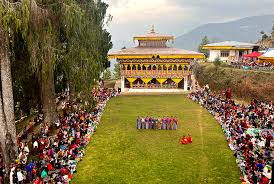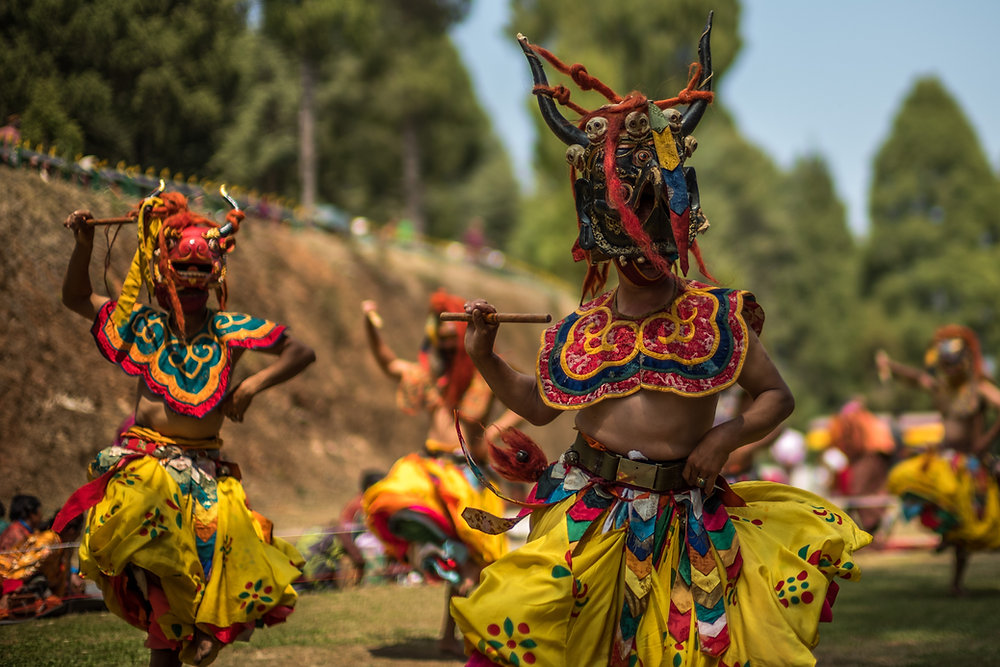Embark on a Magical Journey, Reserve Your Extraordinary Adventure Now!
Bhutan’s festivals, known as Tshechus, are vibrant and colorful celebrations that give visitors a unique glimpse into the country’s rich cultural and spiritual traditions. These festivals are more than just displays of pageantry – they are deeply rooted in Bhutanese Buddhism and are held in honor of Guru Rinpoche, the saint who brought Buddhism to Bhutan in the 8th century.
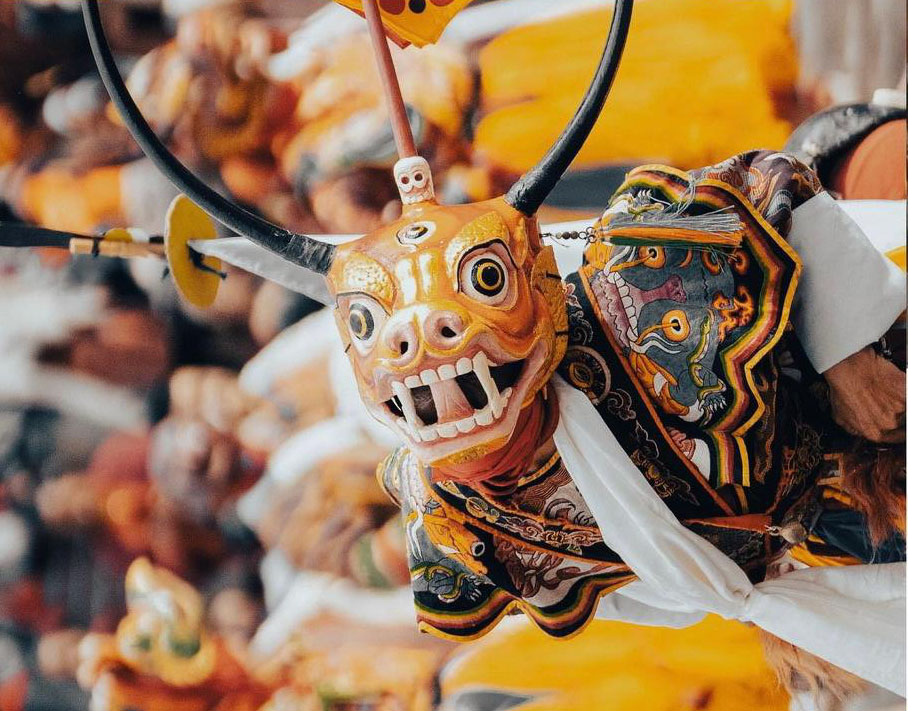
These festivals are dedicated to Guru Rinpoche (also known as Padmasambhava), the revered Buddhist saint who is credited with introducing Buddhism to Bhutan in the 8th century.
Spiritual Significance
Tshechus are religious events that honor Guru Rinpoche, a key figure in Bhutanese Buddhism. For locals, attending these festivals is a form of spiritual renewal, believed to cleanse bad karma and bring blessings. Tourists are drawn to the deep spiritual atmosphere and the chance to observe Bhutan’s religious traditions up close.
Colorful Mask Dances (Cham)
Bhutan charges a Sustainable Development Fee (SDF) of $200 per person per day for tourists. This fee covers accommodation, meals, a tour guide, and transportation within Bhutan. The payment of the SDF is a part of the visa application process, and once you’ve confirmed your booking and paid the fee, the tour operator can proceed with your visa application.
Colorful Mask Dances (Cham):
The Cham dances, performed by monks in elaborate costumes and masks, are a mesmerizing part of these festivals. Each dance tells a story rooted in Bhutanese folklore or Buddhist teachings, making it an intriguing cultural spectacle for visitors.
Majestic Settings:
Once the visa is approved (usually within 72 hours), the Department of Immigration will issue a visa clearaFestivals are held in the courtyards of Bhutan’s grand dzongs (fortress-monasteries) or sacred temples, offering a stunning backdrop of traditional architecture against the country’s scenic landscapes. This combination of spirituality, culture, and nature enhances the allure of these festivals for tourists.
Rich Cultural and Social Gathering
For Bhutanese people, Tshechus are a time to come together and celebrate their shared heritage. Tourists not only get to witness the cultural performances but also interact with locals, dressed in their finest traditional attire. This communal atmosphere enhances the festival’s charm.
Bhutan’s festivals, with their spiritual depth, vibrant performances, and spectacular settings, are not just religious events; they are cultural treasures that have captivated the imagination of tourists worldwide.
Greet with "Kuzu zangpo la." - The Bhutanese way of life
Best Time to Visit Bhutan for Tourists
Key Tourist Seasons:
Spring (March to May)
Autumn (September to November).
Key Points to Remember
Your visa and permits must be arranged before arrival, as you cannot enter Bhutan without an approved visa.
There are a few festivals that we do enjoy immensely. They are typically much smaller in scale, might be a bit off the beaten track and lower in visitors attendance but definitely worth your time and provides the local intimacy that Paro Tshechu and Thimphu Tshechu being marque events do not.
Royal Highland Festival (Laya) - The Royal Highlander Festival is hosted at an elevation of 4000 meters above sea-level. An initiative by His Majesty the King, the festival was first introduced on 16th Of October in 2016 to mark the celebration of the birth of HRH the Gyalsey, it allows visitors to get first hand experience of life & culture of the highlanders from the surrounding villages.
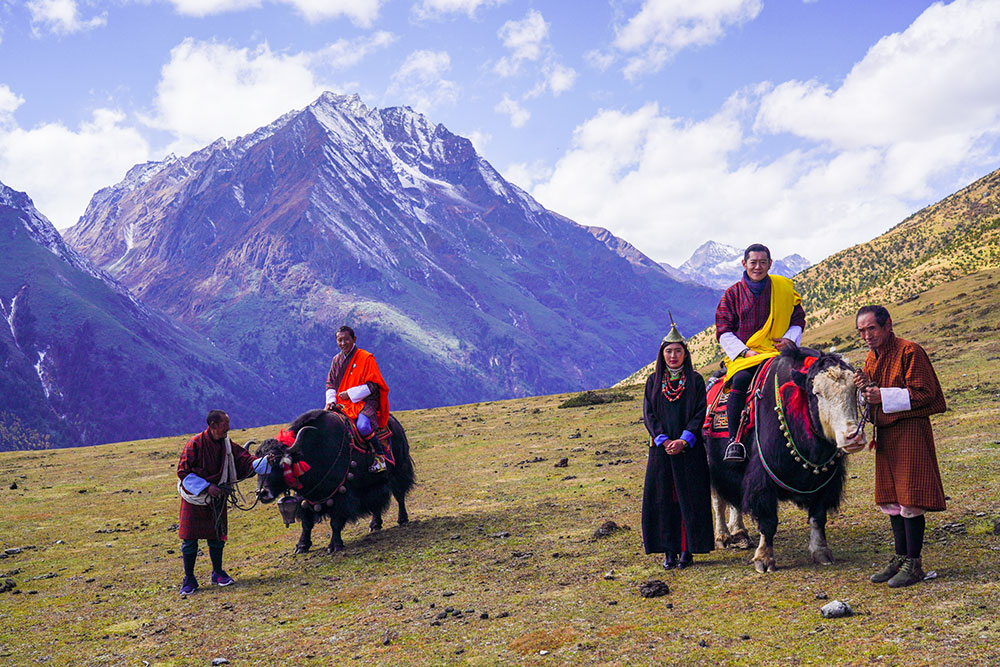
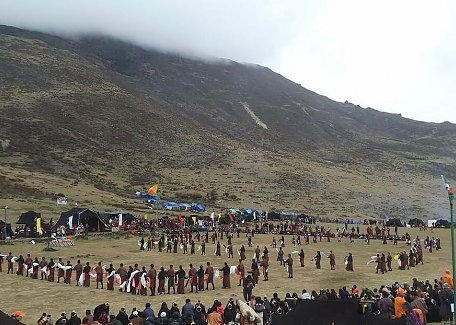
Punakha Tshechu - A much less attended festival, Punakha Festival retells the story of how the Bhutanese outsmart and repel the Tibetans invaders during Zhadrung’s time. Participants dress up as ancient soldiers and horsemen and reenact the various battles at the majestic Punakha Dzong towards the end of winter which is really a very pleasant weather in the valley of Punakha.
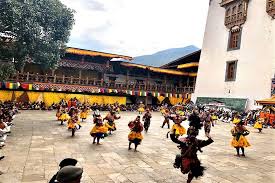
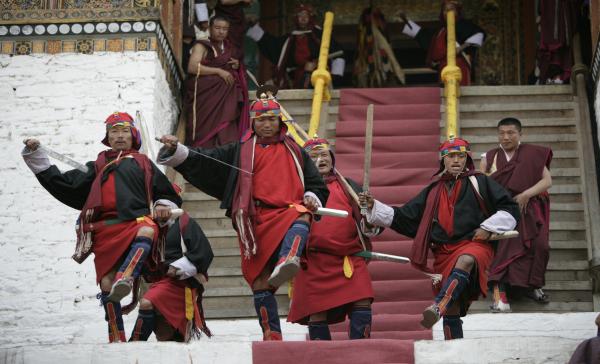
Druk Wangyel Tshechu - The Druk Wangyel Festival is a unique festival in Bhutan. Unlike other festivals at dzongs which were designed by the Zhabdrung, the founder of Bhutan, and performed by monks, the Druk Wangyel festival was curated by Dasho Karma Ura and performed by soldiers. It’s a one day event on every 13th December, to commemorate the flushing out of militia in southern Bhutan and attended by many members of the royal family and political elites.


Talo Tshechu - The Talo Tshechu is a small and intimate festival attended by the villagers of Talo and surrounding villages in the Punakha valley. It is highly accessible, only a 2 hours drive from Thimphu. And we love it for its intimacy and local feel.
